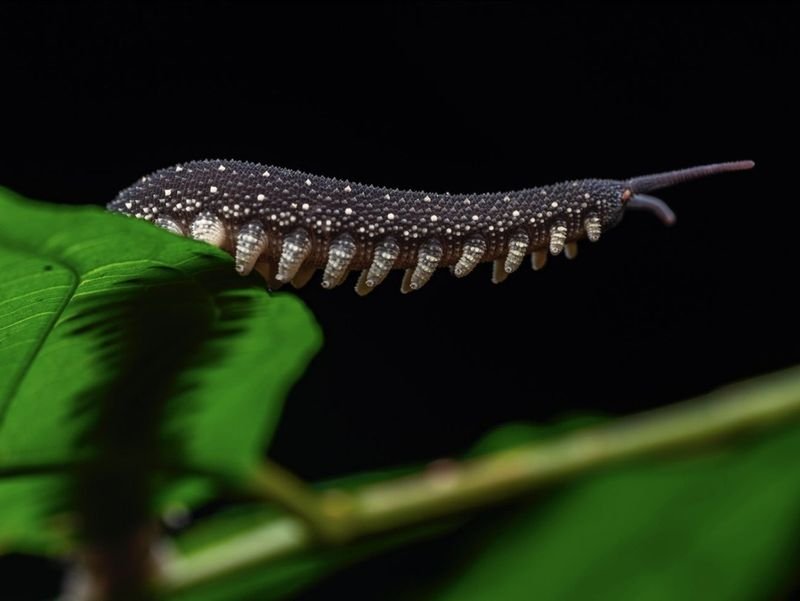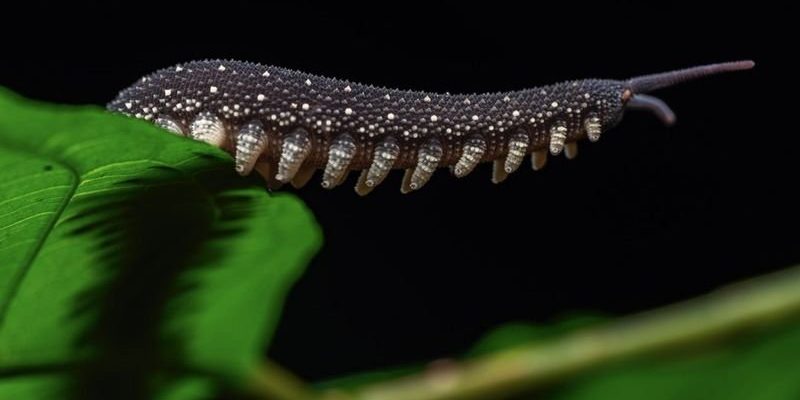
So, what exactly are velvet worms? They’re weird and wonderful creatures that live in moist environments, primarily found in tropical forests. With their soft bodies and gooey slime, they might remind you of a mix between a caterpillar and a slug. Here’s the thing: they have a lot to teach us about our planet. If you’re curious about whether velvet worms can fit in a classroom pet program, stick around. We’ll explore their care, educational benefits, and some considerations to keep in mind.
What Are Velvet Worms?
Velvet worms belong to the phylum Onychophora. They’re not worms in the traditional sense, but rather ancient relatives of arthropods and annelids. Think of them as living fossils, with a lineage that dates back over 500 million years. These little guys have segmented bodies and can even regrow lost limbs, which is pretty impressive!
One of the coolest features of velvet worms is their ability to produce a sticky slime to capture prey. This slime can immobilize insects, providing a fascinating look at how these creatures hunt. Observing this behavior can spark curiosity in students, helping them connect with the natural world in a way that traditional pets might not.
Additionally, their unique appearance and behavior can help shift students’ perspectives about animals. Instead of focusing solely on furry or fluffy creatures, velvet worms encourage an appreciation for lesser-known life forms. This not only makes for an exciting classroom pet but also broadens the understanding of biodiversity.
Educational Benefits of Velvet Worms
Integrating velvet worms into a classroom pet program can have numerous educational benefits. First off, they provide a hands-on learning experience. Students aren’t just reading about invertebrates; they’re observing, interacting with, and caring for a living example. This experiential learning can deepen their understanding and retention of the material.
Another great aspect of velvet worms is their role in teaching students about ecosystems. These creatures thrive in specific environments, and maintaining their habitat can lead to discussions about climate change, habitat destruction, and conservation. Classes can explore what these factors mean for velvet worms and other species, fostering a sense of responsibility towards the environment.
Moreover, velvet worms offer a unique opportunity to learn about biology and anatomy. Students can study their body structure, locomotion, and feeding habits. The way they move, using their many little legs, can lead to engaging discussions about evolution and adaptation. This type of learning can spark interest in fields like biology, ecology, and conservation science.
Care Requirements for Velvet Worms
If you’re considering adding velvet worms to a classroom pet program, understanding their care needs is crucial. These creatures prefer a humid environment, making a terrarium a great home. You’ll need to maintain a temperature between 65°F and 75°F and ensure humidity levels stay high. Misting the terrarium regularly is essential to mimic their natural habitat.
Feeding velvet worms is relatively straightforward, as they primarily eat small insects like crickets or fruit flies. Here’s a simple care routine:
- Habitat: A terrarium with moist substrate and plenty of hiding places.
- Temperature: Keep it between 65°F and 75°F.
- Humidity: Regularly mist the terrarium to keep moisture levels high.
- Feeding: Provide small insects once or twice a week.
It’s also important to monitor their health. Velvet worms can be sensitive to changes in their environment, so paying attention to their behavior can be a key learning moment for students. If they’re less active or not eating, it might be time to investigate potential issues like humidity levels or food availability.
Potential Challenges and Considerations
While velvet worms can be an exciting addition to classroom pet programs, there are some challenges to keep in mind. For starters, they’re not as familiar as traditional pets, which may make some students hesitant about interacting with them. It’s essential to foster an environment of curiosity and acceptance, encouraging students to learn about and respect all forms of life.
Another challenge is their care requirements. Maintaining the right humidity and temperature can be tricky, especially in a classroom setting where conditions may fluctuate. Teachers will need to be proactive in monitoring the environment and making adjustments as needed. This also means potentially involving students in the upkeep, which can be a valuable learning experience!
Additionally, velvet worms are not as interactive as some other classroom pets. While they have fascinating behaviors, they won’t come when called or enjoy being held. This may limit the hands-on opportunities for students. However, this is a chance to instill patience and understanding about different animals’ needs and behaviors.
How to Introduce Velvet Worms in the Classroom
If you’re sold on the idea of introducing velvet worms to your classroom, it’s important to plan the rollout carefully. Start by doing some research together with your students. Gather interesting facts and stories about velvet worms to build excitement. You might even consider a class project where students create presentations or artwork inspired by these creatures.
Once you have the terrarium set up and the worms settled in, organize a “meet and greet” day. This could be a fun event where students can observe the worms in their habitat and ask questions. Make sure to explain their unique features and behaviors, making the learning experience as engaging as possible.
Also, don’t forget to involve students in their care. Assign rotating responsibilities to different groups, whether it’s misting the habitat, feeding, or simply monitoring their activity. This not only teaches them about responsibility but also instills a sense of ownership over their classroom pet, making it a more meaningful experience.
In conclusion, introducing velvet worms to a classroom pet program can provide a unique and enriching experience for students. They offer a hands-on learning opportunity, teach students about ecosystems and conservation, and help broaden perspectives on the diversity of life. While there are challenges in their care, the educational benefits can significantly outweigh them.
So, if you’re looking for an unconventional classroom pet that encourages curiosity and respect for all living creatures, velvet worms could be the perfect choice. With a little planning and care, you can create an engaging environment where students can learn and grow alongside these fascinating creatures. Embrace the weird and wonderful world of velvet worms, and watch your students thrive!

